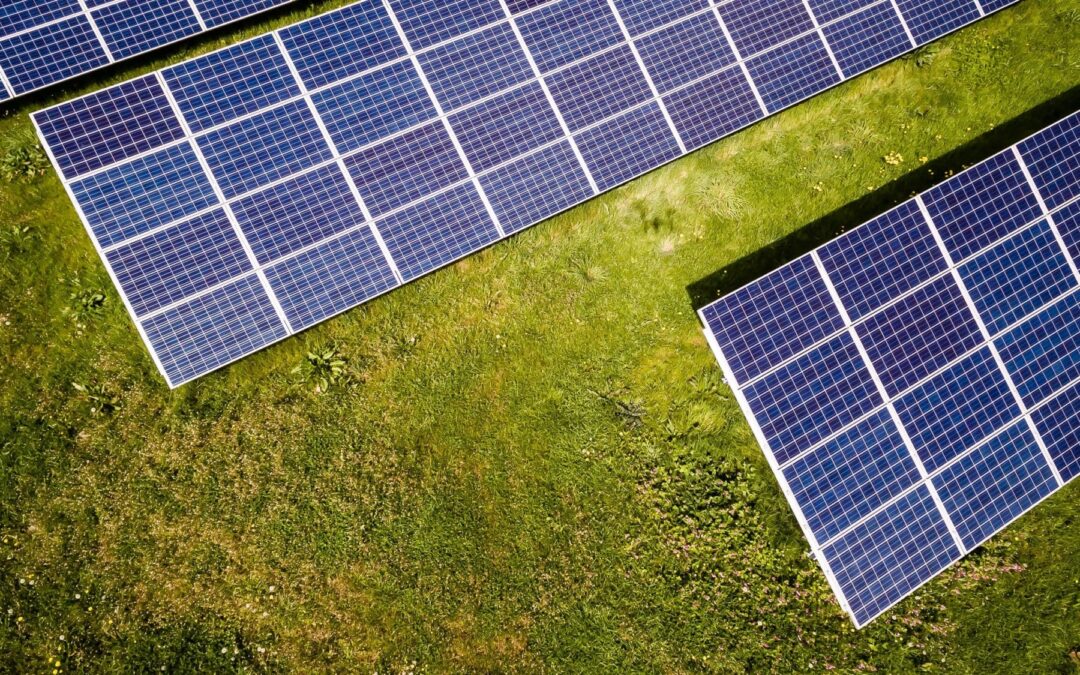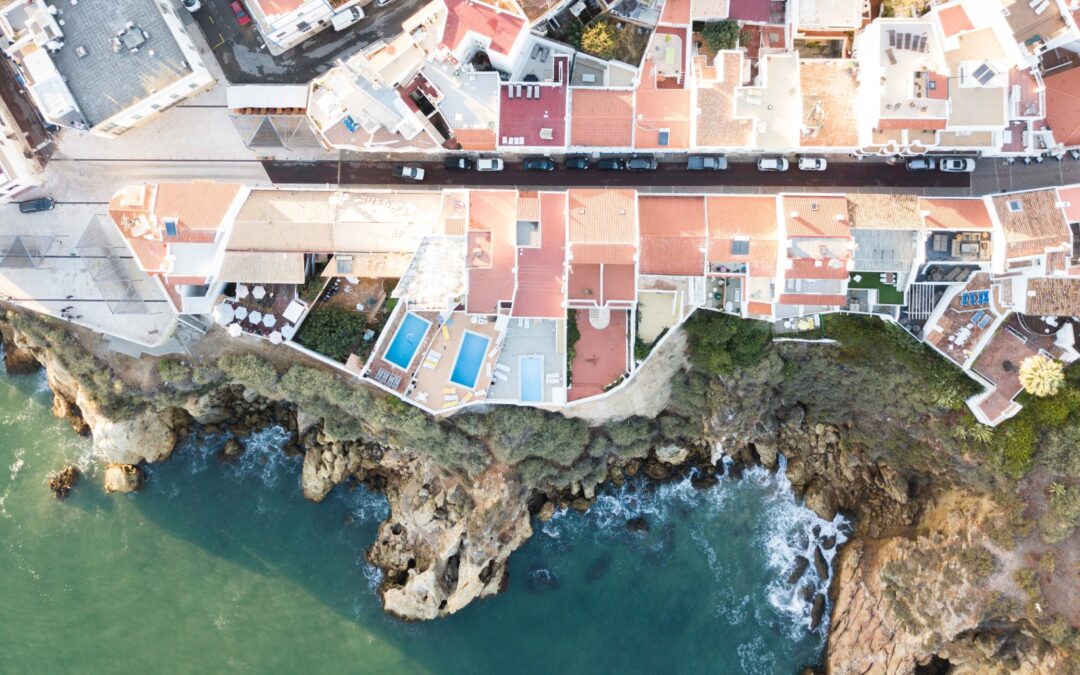
SolarDuck’s mission to scale offshore solar

Most recent
Start-up SolarDuck wants to demonstrate that offshore solar energy can unlock the doors to scaling renewable energy.
When we think of offshore energy generation, we think of offshore wind farms. Wind farms pioneered by countries like Denmark. And largely absent in Japan. Solar is associated with large swaths of panels across rooftops and plots of land, but little will picture coastlines dotted with floating solar farms. But this industry has been gaining significant momentum in recent years, with bigger sites coming online. A key player in the industry is Dutch start-up SolarDuck. The company’s offshore platform solution was selected as one of the most promising innovations for renewable energy generation by the Japan challenge for Society 5.0 event.
Offshore solar with SolarDuck
In April 2021, SolarDuck revealed its 65 kW strong floating solar facility, serving as a proof of concept. The plant will be connected to a 10 kW electrolyzer that will produce hydrogen. The offshore solar plant will be deployed inshore in the Waal, Netherlands. Koen Burgers, CEO at SolarDuck explained to PV Magazine the aim is to supply the technology to large companies and megacities in the Mediterranean, Caribbean and South East Asia region. Burgers noted that the platform can withstand waves up to 3 meters (9.84 ft) high and hurricane winds.
The structure follows an oil rig like design and can be connected to other offshore wind generation facilities, such as wind farms or oil platforms. Brugers explained that the design is part of the start-ups heritage, as it’s a spin-off from the research department at Dutch-based Damen Shipyards Group. This manufacturer is familiar with the harsh conditions out at sea. The structure, which uses floating pillars, elevates the solar farm 3 meters above the water surface, decreasing the resistance against the incoming waves and keeping the panels and its components dry. Don Hoogendoorn, CTO at SolarDuck, explained to PV Magazine, “Our structure elevates all PV and electrical parts above the waves.” Noting that this set up prevents the waves from causing micro-cracks across the solar panels.
SolarDuck believes the triangular shape is the best design to withstand waves and allows for modular scaling. Hoogendoorn told PV Magazine the structure was designed with safety in mind. The shape keeps the large constructions stable and allows for easy access to perform maintenance out at sea. SolarDuck, through the modularity of the design, can customize the plants based on the customer needs. That doesn’t mean the platforms can only have a triangular shape. As they are built like a diamond, a wide variety of configurations can be delivered, Hoogendoorn added. The pilot is funded by the Dutch province, Gelderland, together with hydrogen partner Voyex. In total, the project will cost an estimated €1 million ($1.07 million). SolarDuck’s technology also caught the attention of Japan, who have a unique set of challenges to scale renewables.
Japanese expansion
In August 2021, Japanese Shibuya Startup Support spoke with founder of the Dutch offshore solar company SolarDuck, Olaf de Swart, about his journey to roll-out and scale offshore solar energy generation. De Swart explained that solar power is the cheapest and most readily available energy source. By introducing offshore wind, he explained land usage is minimized and puts no burden on the environment. The name SolarDuck isn’t randomly chosen either. De Swart explained, “Our startup’s name derived from a ‘duck curve’ graph, solar power’s greatest challenge with a duck-looking shape.” Adding that solar energy is widely available during the day, exactly when the demand for electricity is lowest.
Through its offshore solar farms, De Swart wants to alleviate some of the challenges to meet renewable energy demand by delivering solar power as close to customers as possible. Pointing to dense urban areas that require large amounts of energy. One of those areas is Japan, coincidentally the region where SolarDuck is trying to expand its product offering. De Swart said that Japan’s mountainous terrain makes it difficult to build energy plants cost effectively. He takes Japan’s largest solar energy plant as an example, which generates a meager 100 megawatts. This but a small amount in comparison to other solar farms.
De Swart notes that through its solution it can help Japan expand its solar capacity. He said, “In the coming years, we are planning to develop a cost-effective competitive energy solution for Japan. Together with a local partner, we are already working on developing Japan’s first offshore floating solar plant.” The plant will be home to a 17 by 17 meters floating solar platform, which has 40 solar modulus. Each module can generate between 16 to 20 kilowatts of power. These systems, De Swart adds, can be connected to plants with a capacity up to 10 MW. When added to a solar farm, the energy capacity can be expanded to 500 megawatts. In February 2022, SolarDuck was one of the winners at the “Japan challenge for Society 5.0”, a start-up accelerator initiative introduced by the Japanese External Trade Organization (JETRO). The start-up award program aims to select innovative technologies that help solve Japan’s social challenges. The winning position of SolarDuck first affirms the belief of Japanese authorities that its technology can help the country transition to renewable energy.
Scaling SolarDuck
In April 2022, SolarDuck secured €4 million ($4.29 million) in funding. The solar start-up received additional funding for new and existing investors. Chairman of Norwegian based Link Venture Capital, Christian Rangen, said in the press release that the venture company has been involved with the start-up since its founding and is impressed with the advancements the company has been able to realize thus far. Rangen added, “We are privileged to lead the consortium of investors that allows SolarDuck to develop towards commercialization.” The additional capital will help the solar company to complete its technical roadmap which in turn will enable SolarDuck to scale its offshore floating solar installation in Belgium. The facility along the coast of Ostend will have an anticipated capacity of 500 KWp. By scaling its energy capacity, the company aims to drive down the cost of the generated electricity toward a competitive price.
In November 2022, SolarDuck announced it would be building the largest offshore floating solar plant together with utility company RWE. SolarDuck will work together with REW to build a hydrogen offshore floating solar plant. Its floating solar panels will be part of the offshore wind park Hollandse Kust West VII (Netherlands). The solar start-up will build a 5MW demonstrator that will become operational by 2026. In the press release, CEO of SolarDuck, Koen Burgers, noted that the project is an important milestone for the young company and for the industry as a whole. Burgers highlighted that SolarDuck would become the first company who would roll-out an offshore solar solution at this scale. Demonstrating the resilience and scalability of its systems.
In the same month, SolarDuck received €7.8 million ($8.34 million) in funding from the Netherlands Enterprise Agency (RVO) (Netherlands Enterprise Agency) to build its offshore floating solar facility, through the Merganser consortium. The consortium, which includes the marine research institute from the TU Delft university, knowledge institute for water and subsurfaces Deltares and independent research organization TNO, wants to deliver a proof of concept that will solidify the upcoming technology of offshore solar energy as a valuable solution to aid the transition to renewable energy.
CTO of consortium partner SolarDuck, Don Hoogendoorn, said in the press release that it’s proud to have received the necessary funding to build scalable offshore solar solutions. Hoogendoorn explained, “Based on our first, successful pilot in 2021, our technology has already obtained an Approval in Principal from Bureau Veritas. We are proud to collaborate with such renowned knowledge institutions as Deltares, Marin, TNO and TU Delft.” Adding that successful realization of such pioneering projects requires the brightest minds. Together with these professionals, SolarDuck will realize a successful launch and demonstrate the technology is commercially viable.
Impact on ecosystems
So far, the technology looks very promising. Land usage is minimized and land-based ecosystems won’t suffer the negative consequences of vast arrays of panels dotting the landscape. But a lot is still unknown about the negative, or positive, impact of floating solar facilities on marine ecosystems. Deltares is currently studying the impact of water-based solar farms.
Deltares says that the research is necessary to find the optimal design and management for floating solar facilities. It states it wants to know what the effects are of the offshore solar farms, whether the impact is positive or negative and at what magnitude and how negative effects can be limited. The organization has already found potential ecosystem disruptions from floating solar planets. The most obvious one is blockage of sunlight from entering the water, which in turn will result in cooling of water underneath, leading to reduced oxygen levels. Aquatic plants will also experience lower amounts of nutrients. Cleaning and maintaining the panels can lead to chemicals spilling the water. Deltares also expects birds to use the panels as resting places. Delatares points out that there are still a lot of unknowns regarding the technology. However, some studies have already been conducted.
Deltares, together with PWN, KWR, Hydro-Key B.V. explored the possible impact of floating solar photovoltaic (FPV) systems on water temperature in the Andijk reservoir, in the Ijsselmeer. Through simulations, the researchers discovered that water surface temperatures increase slightly. Deltares explained, “The model simulations have shown that locally, near and below the FPV systems, some increase in water temperature may occur for the selected adverse upper-end estimates […].” Noting that shifts in water quality and ecosystems can occur. However, the effects are expected to remain limited, even when changing the FPV systems lay-out.
Greater efficiency
Despite the large unknowns, in 2020 researchers at the Utrecht University in the Netherlands, found that offshore solar farms performed better overall compared to their land-based counterparts. In a paper published in the scientific journal Progress in Photovoltaics, the researchers found that offshore floating solar panels performed 13 percent better on average in comparison to land based installations. In optimal conditions, the floating panels were able to generate 18 percent more energy, according to computer models created by the researchers.
Sara Golroodbari, PhD Candidate at the Utrecht University, explained that the floating solar panels aren’t affected by waves, meaning the panels can be installed at the most efficient angle. Their yield is further increased thanks to the lower surface temperatures out at sea, making the area very suitable for generating solar energy. The panels also remain dust free, don’t require a suitable roof and pose little damage to local ecosystems. The latter, as previously highlighted, is still a large unknown. Golroodbari adds that many coastal areas are densely populated. She said, “Moreover, 50% of the world’s population lives less than 100 kilometers from the coast.” Whether all these predictions hold up in real world scenarios however, remains to be seen.
SolarDuck expansion
SolarDuck is a pioneer in the field and might become the first energy company to truly scale offshore solar power generation. It has received millions in funding in recent years and is building impressive floating systems, in regions such as Japan, that can help smooth the transition to renewable energy. Combined with solutions such as battery storage, adding offshore solar plants into the energy mix makes balancing the electricity grid more efficient. The topic of ecosystem damage however, might take away some of the momentum. But as with many ecological concerns related to renewables, they pale in comparison to fossil fuels such as coal, who have, and still are, destroying the planet at an alarming rate.
Further reading

Morocco’s mission to become a solar powerhouse
Morocco has great ambitions to become a net solar exporter. How does the country plan to achieve these incredible...

Restoring ecosystems with solar panels
Solar panels are a crucial part of decarbonizing our environment. But, they also pose a risk to local...

Spain’s struggle to adopt solar power
After several crucial policy missteps, sunny Spain is struggling to get solar power off the ground. The sunny...
Most recent

How Myanmar lost 30% of its forest in 30 years
Myanmar is seeing deforestation rates increase rapidly. In the last three decades, the country already lost 30 percent...

Portugal’s struggle to part with fossil fuels
Portugal is heavily reliant on fossil fuels and its love affair with the fossil fuel industry makes transitioning to...

Climate change spells uncertain future for winemakers
Winemakers ride into an uncertain future as climate change spells greater uncertainty for their businesses. Climate...


